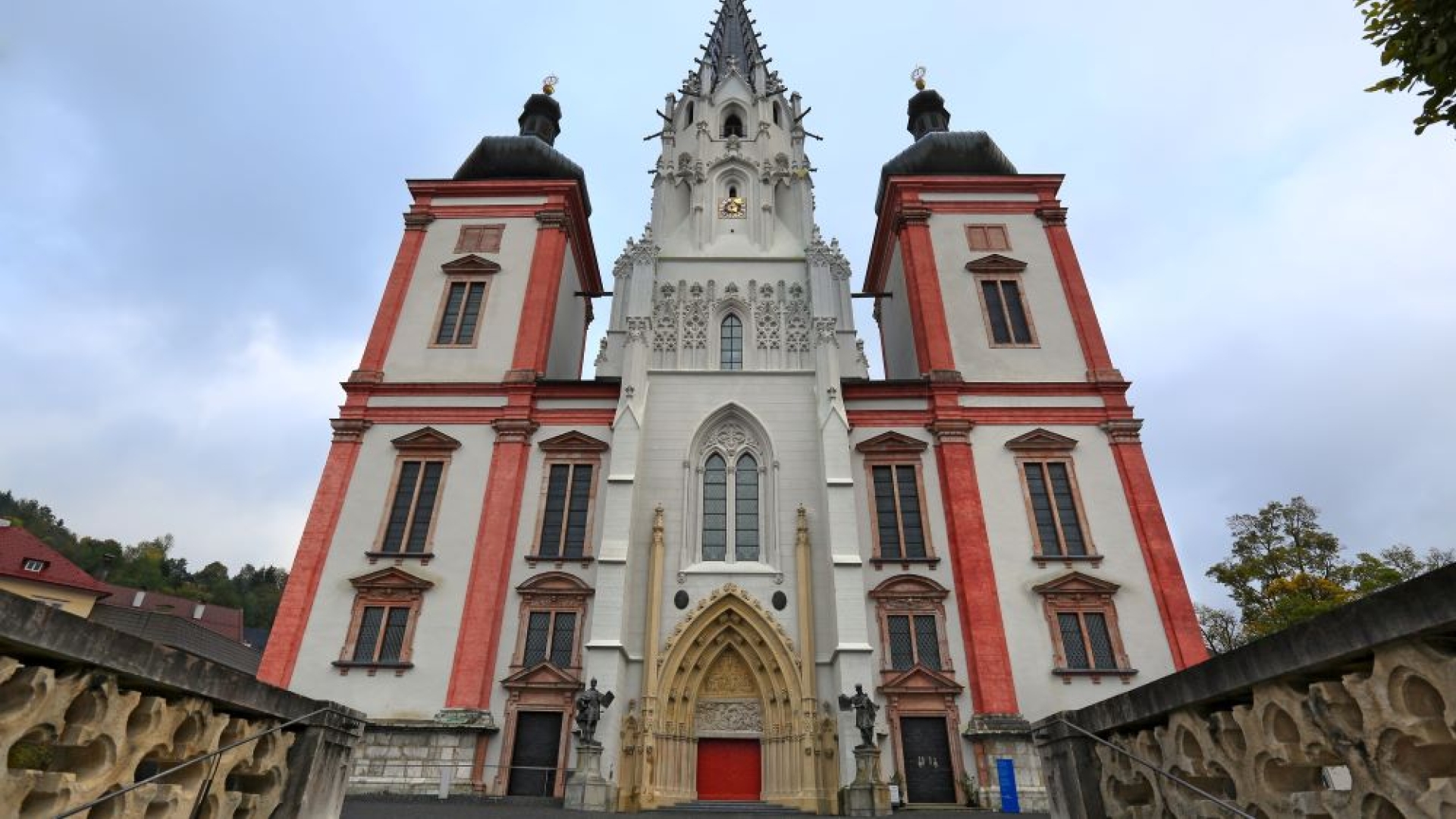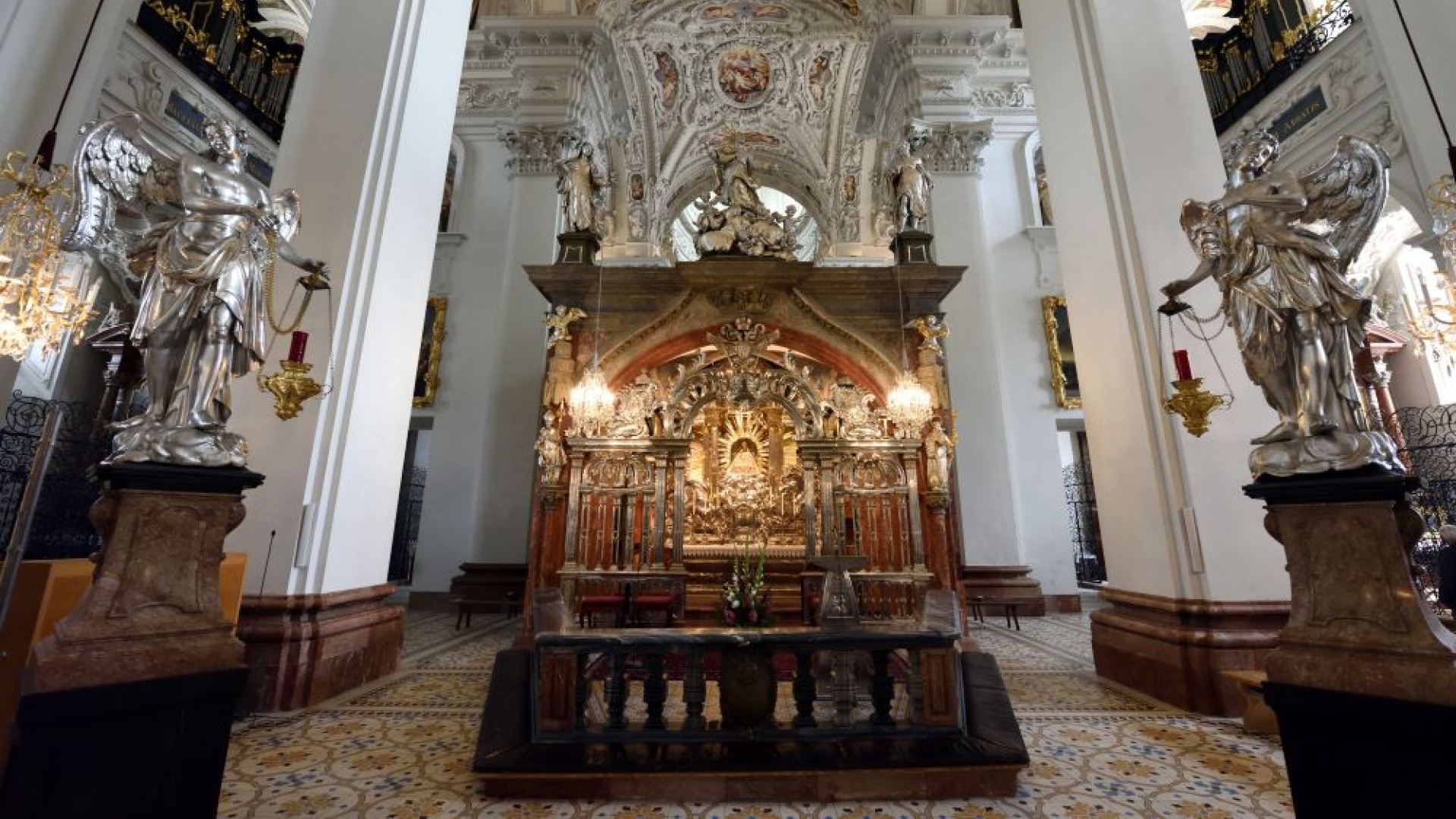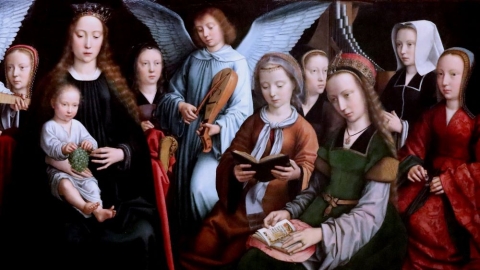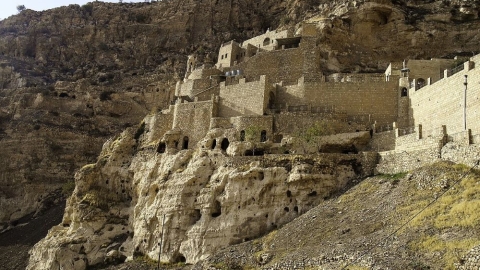The Mariazell Shrine in Austria

The Mariazell Basilica, which rises in the heart of the Styrian mountains some 70 km east of Vienna, is the main spiritual center of the Catholic populations of the Danube area. Every year, it welcomes nearly a million pilgrims: Austrians, but also Czechs, Slovaks, Hungarians, Croatians, and Slovenians.
History
The shrine was founded in 1157, following a miracle performed by the Virgin Mary. A Benedictine monk, Magnus, had been sent by his Father Abbot to preach the Gospel in this region. He carried with him a statue of the Madonna carved in linden wood. Along the way, he found himself blocked by a rock. He placed the statue on the rock and the rock split to let him pass.
He built a monastic cell – “zell” in German – from which comes the current name of Mariazell. His reputation for holiness provoked conversions and attracted pilgrims. The statue in question is the famous Virgin venerated today, known as Magnus Mater Austriae, the Great Mother of Austria.
Successive churches
A second miraculous event was at the origin of the first church: the margrave of Moravia and his wife were cured of a serious illness and, in gratitude, they made a donation for the construction of a church which began in 1200. An independent parish already existed in 1269. In 1330, an indulgence granted by the bishop of Salzburg attests it being a frequented place of pilgrimage.
The Romanesque church was enlarged and transformed into a Gothic church, begun with a donation from King Ludwig I of Hungary in 1370, in thanksgiving for victories against the enemies of Christianity. This church was gradually enlarged in the following centuries, but the initial Romanesque core was preserved.
The plenary indulgence granted in 1399 by Pope Boniface IX played a major role. It was granted for the week following the octave of the Assumption, which allowed the development of processions which remained active after the expiration of the indulgence.
During the Reformation, there was a sharp decline in pilgrimages, but for Catholic princes and supporters of the Counter-Reformation, the Marian shrine became the symbol of Catholicism. Over the centuries, the flow of pilgrims continued to increase to the place called Mariazell.
In the 16th century, Mariazell was one of the internationally renowned places of pilgrimage. Pilgrims from present-day Bavaria, Bohemia, France, Italy, Croatia, Poland, Germany, Switzerland, and especially Austria and Hungary came, even at that time, to pray to the Virgin of Mariazell.
From the 17th century the influx of pilgrims required a complete reconstruction, which was done in the Baroque style. At that time, the Virgin Mary was given the names Magna Domina Hungarorum (Great Sovereign of the Hungarians) and Regina Slavorum Gentium (Queen of the Slav peoples).
In 1907, the church, which was named the Nativity of Mary, was elevated to the rank of minor basilica by Pope St. Pius X, and in 1908, the image of the Virgin received the papal coronation. Mariazell is erected as a national shrine, from where the illustrious Mother protects the country.
The impulse of the “miracle of the rosary” against communism
As the danger of Soviet occupation threatened, on February 2, 1946, a Capuchin priest, Petrus Pavlicek, prayed to the Virgin at Mariazell. An inner voice then said to him: “Do whatever I tell you and you will have peace.” He understood that Mary was asking the faithful to pray the rosary tirelessly to get Austria out from under the communist yoke. After seven years’ perseverance, this crusade saved the country. The communists left.

The chapel with the image of the crowned Virgin
(Source : basilika-mariazell.at/La Croix/cath.ch – FSSPX.Actualités)
Illustration 1 : Foto 78785284 © Balakate | Dreamstime.com
Illustration 2 : Photo 203545091 © Richard Banary | Dreamstime.com





